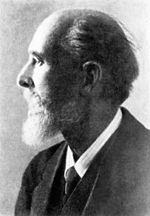Peter Carl Gustavovich Fabergé (Russian: Петер Карл Густавович Фаберже, romanized: Peter Karl Gustavovich Faberzhe; 30 May [O.S. 18 May] 1846 – 24 September...
22 KB (2,472 words) - 09:01, 11 January 2025
A Fabergé egg (Russian: яйцо Фаберже, romanized: yaytso Faberzhe) is a jewelled egg first created by the jewellery firm House of Fabergé, in Saint Petersburg...
56 KB (3,234 words) - 17:19, 7 February 2025
of Peter Carl Fabergé, maker of Fabergé eggs. He established his own business in Saint Petersburg, which his son inherited. Gustav Fabergé, a Baltic German...
6 KB (722 words) - 14:48, 12 January 2025
1842 in Saint Petersburg, Russia, by Gustav Fabergé, using the accented name Fabergé. Gustav's sons – Peter Carl and Agathon – and grandsons followed him...
48 KB (5,508 words) - 13:56, 11 October 2024
Agathon Karlovich Fabergé (German: Agathon Carl Theodor Fabergé; Russian: Агафон Карлович Фаберже, romanized: Agafon Karlovich Faberzhe; 24 January [O...
8 KB (898 words) - 16:27, 11 October 2024
Nécessaire egg is an Imperial Fabergé egg, one of a series of fifty-two jeweled eggs made under the supervision of Peter Carl Fabergé for the Russian Imperial...
5 KB (501 words) - 18:48, 7 March 2024
an Imperial Fabergé egg. It became the first in a series of more than 50 such jeweled eggs made under the supervision of Peter Carl Fabergé for the Russian...
8 KB (917 words) - 22:24, 4 September 2023
Theo Fabergé (26 September 1922 – 20 August 2007) was a grandson of Peter Carl Fabergé. His father Nicholas Fabergé, Carl's youngest son, arrived in London...
5 KB (713 words) - 17:24, 2 February 2025
enameled Easter egg made under the supervision of the Russian jeweller Peter Carl Fabergé in 1909, for Nicholas II of Russia, who presented it to his mother...
3 KB (268 words) - 10:44, 25 September 2021
by Michael Perchin under the supervision of the Russian jeweller Peter Carl Fabergé in 1894. The egg was made for Alexander III of Russia, who presented...
7 KB (563 words) - 06:38, 17 February 2024









